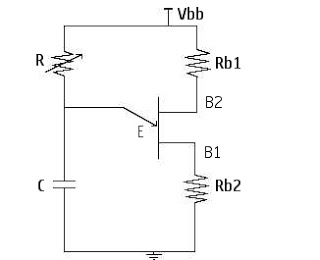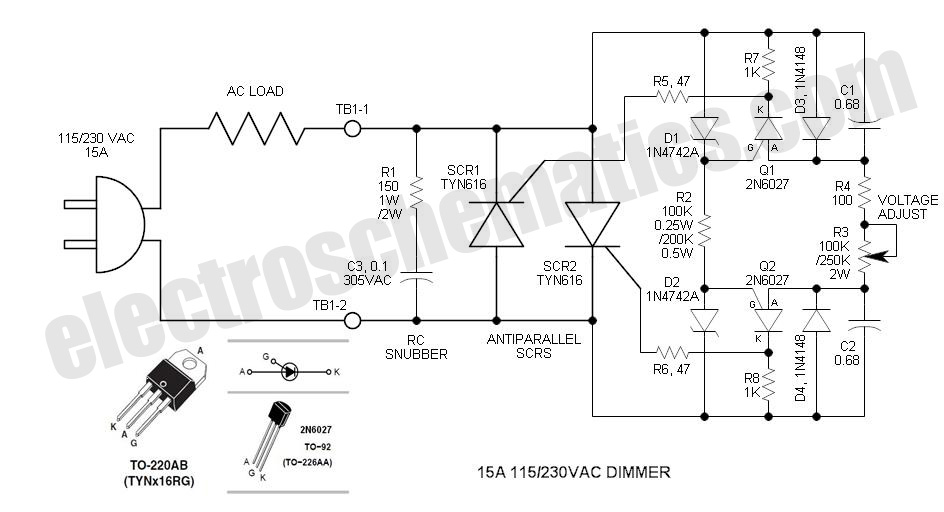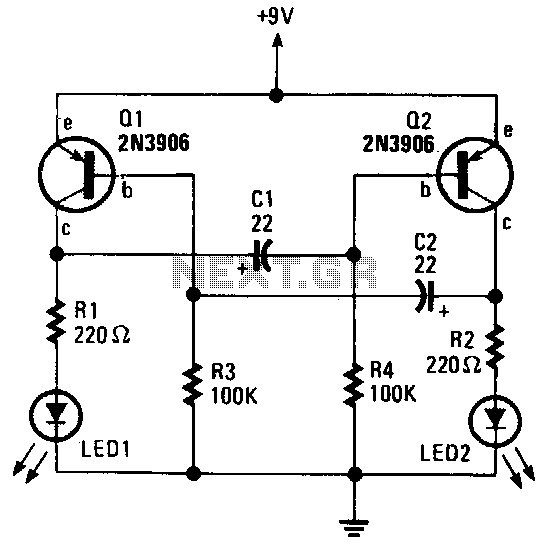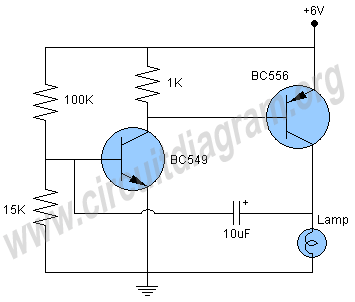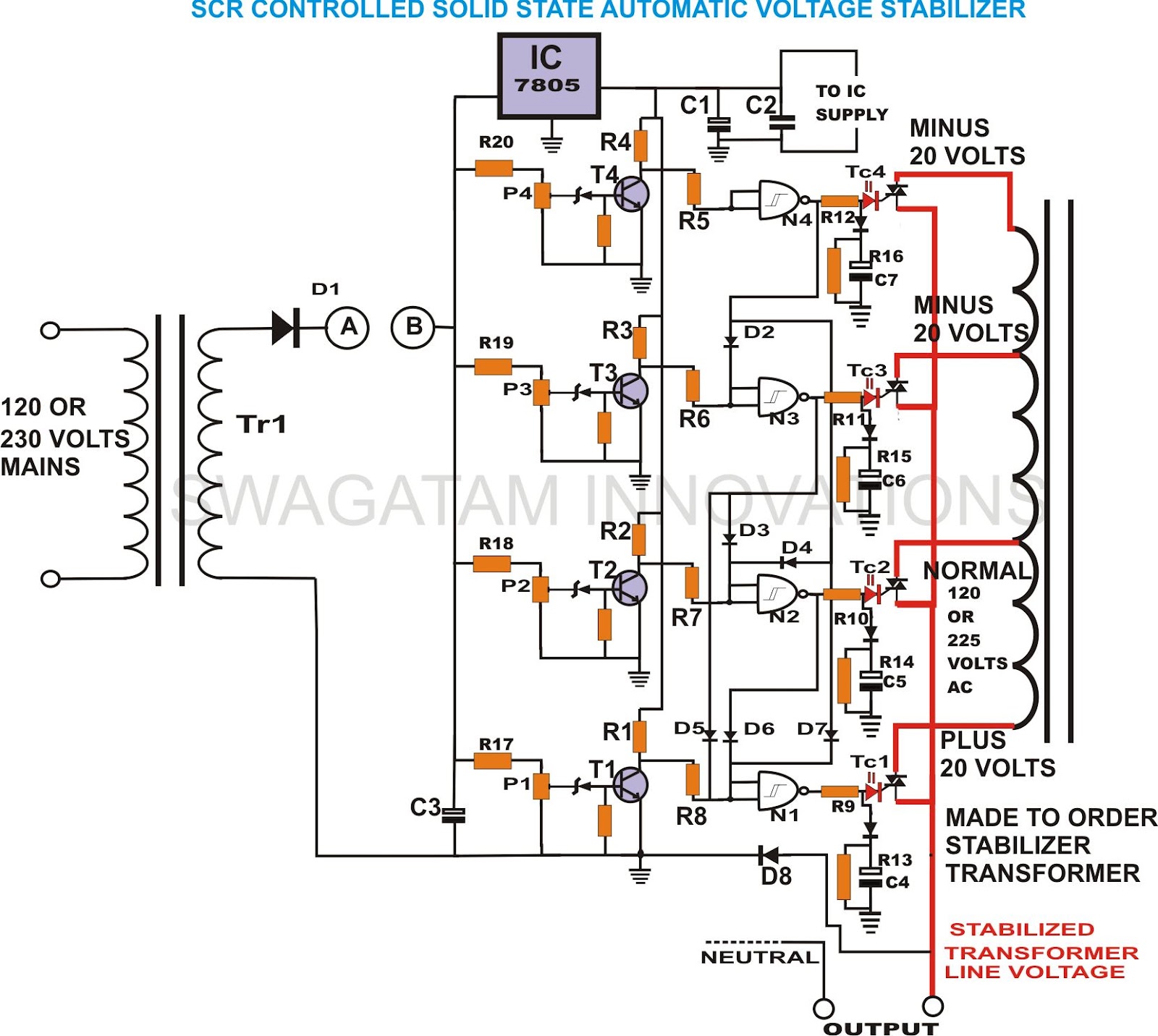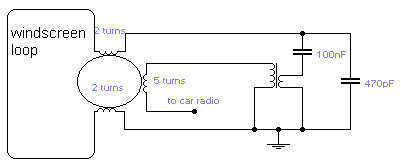
SCR relaxation flasher
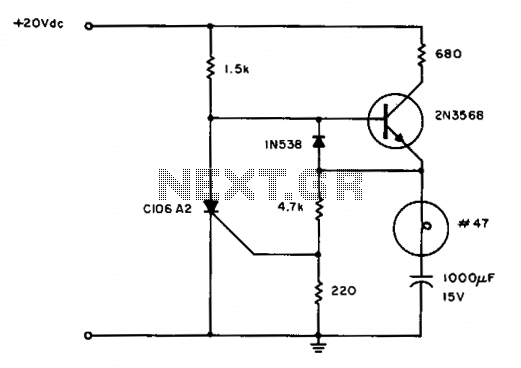
Flashing occurs each time the capacitor discharges through the turned-on SCR. When the discharge current falls below the SCR holding current, the SCR turns off, and the capacitor begins charging for another cycle. The circuit will maintain a slower but good flashing capability even after considerable battery degradation.
The described circuit utilizes a Silicon Controlled Rectifier (SCR) to control the discharge of a capacitor, creating a flashing effect. The operation begins when the capacitor is charged to a certain voltage level. When the SCR is triggered into the 'on' state, the capacitor discharges through the SCR, producing a flash of light or signal as desired.
The critical aspect of this circuit is the holding current of the SCR. This is the minimum current required to keep the SCR in the conducting state. Once the discharge current from the capacitor drops below this threshold, the SCR will turn off, interrupting the flow of current. At this point, the capacitor begins to recharge, preparing for the next discharge cycle. The timing of this cycle can be adjusted by varying the capacitor value or the resistance in the charging path.
An essential feature of this circuit is its ability to maintain functionality even with a degraded battery. As batteries age, their voltage and capacity may diminish, but the circuit is designed to provide a slower flashing capability, ensuring that it can still operate effectively under lower voltage conditions. This resilience makes the circuit suitable for applications where battery life is a concern, such as in portable devices or emergency lighting systems.
In summary, this SCR-based flashing circuit effectively manages the discharge and recharge cycles of a capacitor, ensuring reliable operation even as the power source degrades. Adjustments to component values can fine-tune the flashing rate and intensity, making it versatile for various applications.Flashing occurs each time the capacitor discharges through the tumed-on SCR. When the discharge current falls below the SCR holding current, the SCR turns off, and the capacitor begins charging for another cycle. The circuit will maintain a slower but good flashing capability even after considerable battery degradation. 🔗 External reference
The described circuit utilizes a Silicon Controlled Rectifier (SCR) to control the discharge of a capacitor, creating a flashing effect. The operation begins when the capacitor is charged to a certain voltage level. When the SCR is triggered into the 'on' state, the capacitor discharges through the SCR, producing a flash of light or signal as desired.
The critical aspect of this circuit is the holding current of the SCR. This is the minimum current required to keep the SCR in the conducting state. Once the discharge current from the capacitor drops below this threshold, the SCR will turn off, interrupting the flow of current. At this point, the capacitor begins to recharge, preparing for the next discharge cycle. The timing of this cycle can be adjusted by varying the capacitor value or the resistance in the charging path.
An essential feature of this circuit is its ability to maintain functionality even with a degraded battery. As batteries age, their voltage and capacity may diminish, but the circuit is designed to provide a slower flashing capability, ensuring that it can still operate effectively under lower voltage conditions. This resilience makes the circuit suitable for applications where battery life is a concern, such as in portable devices or emergency lighting systems.
In summary, this SCR-based flashing circuit effectively manages the discharge and recharge cycles of a capacitor, ensuring reliable operation even as the power source degrades. Adjustments to component values can fine-tune the flashing rate and intensity, making it versatile for various applications.Flashing occurs each time the capacitor discharges through the tumed-on SCR. When the discharge current falls below the SCR holding current, the SCR turns off, and the capacitor begins charging for another cycle. The circuit will maintain a slower but good flashing capability even after considerable battery degradation. 🔗 External reference
